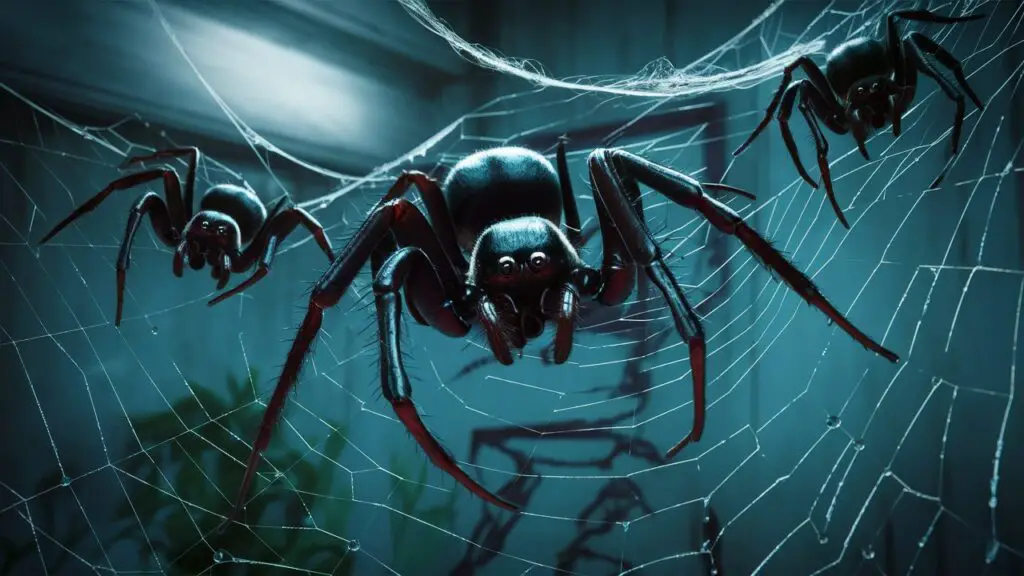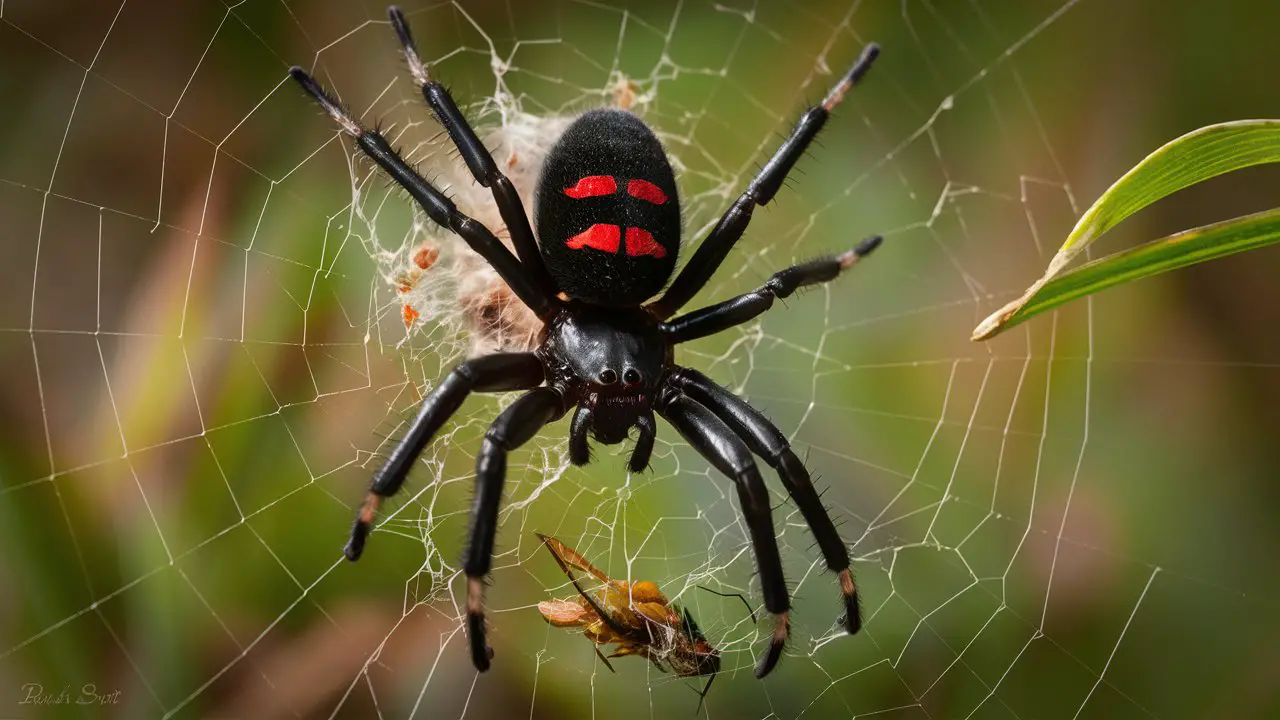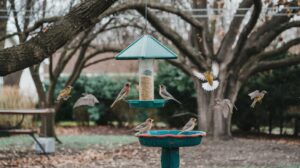As you venture into your garage or basement, you may encounter the infamous black widow spider or one of its relatives. With their iconic red or orange hourglass marking, widow spiders instill fear in many who spot them. Before you reach for the bug spray, educate yourself on properly identifying and managing these arachnids. Learning to identify widow spiders by their markings and webs can prevent unnecessary alarm over lookalikes. Understanding their habits and habitat preferences allows you to take preventative measures. If you confirm black widows or brown widows on your property, control methods like sanitation and exclusion can reduce reliance on insecticides. Arm yourself with knowledge to coexist safely with widow spiders.
What Are Widow Spiders?
Description
Widow spiders, of the genus Latrodectus, are venomous spiders found worldwide. They are typically shiny black, with a red hourglass-shaped marking on their abdomen. There are over 30 species of widow spiders, varying in size, coloration, and geographical distribution. The females tend to be more venomous than the males.
Habitat
Widow spiders prefer warm climates and are commonly found in dry, sheltered areas such as under decks, in sheds, under outdoor furniture, and inside attics or crawlspaces. They build irregular webs in corners and crevices to catch prey such as insects, arachnids, and other small invertebrates. Widow spiders are not aggressive and will usually only bite in defense of their web or eggs.
Bite Effects
The venom of widow spiders is a neurotoxin that can cause a range of symptoms in humans including pain, swelling, nausea, and difficulty breathing. Bites are rarely lethal to humans, but medical attention should always be sought immediately. Antivenom and other treatments are available to help manage symptoms. Some people may experience an allergic reaction to the venom, so epinephrine may also be administered.
The severity of a widow spider bite depends on the age and health of the victim, as well as the amount of venom injected. Bites to small children, elderly individuals or those with health conditions are the most dangerous and require prompt emergency care. With proper treatment, most people recover from a widow spider bite within a few days with no lasting effects. However, in some cases, symptoms may persist for weeks.
Control
The most effective way to control widow spider populations and reduce the risk of bites is through habitat modification and sanitation. Remove wood piles, yard debris, and clutter where the spiders can hide. Seal any cracks or holes leading into buildings, attics, basements, and crawlspaces. Outdoor lighting should be kept to a minimum, as it attracts the spiders’ insect prey. If necessary, residual insecticides can also be applied to known spider hotspots.
Identifying Widow Spiders vs Other Common Spiders (Jumping Spiders, Long Leg Spiders, Banana Spiders)
To properly identify widow spiders, it is important to understand their key characteristics and how they differ from other common spiders you may encounter. Widow spiders belong to the genus Latrodectus and are medium-sized spiders with bulbous abdomens and relatively short legs.###
Latrodectus species, such as the black widow and brown widow, are most easily distinguished by their shiny, black, bulbous abdomens with a red or orange hourglass shape on their underside. In contrast, jumping spiders have square-shaped abdomens and are very active hunters, long leg spiders have long spindly legs and small abdomens, and banana spiders have yellow and black striped legs and a silvery abdomen.
In terms of habitat, widow spiders prefer undisturbed places like wood piles, sheds, garages and crawl spaces. You are unlikely to find them in the open or on large visible webs like other spiders. Widow spiders build irregular webs close to the ground or in sheltered areas. The webs of jumping spiders and banana spiders, on the other hand, tend to be located higher up, off the ground.
The venom of widow spiders is particularly potent and can cause a medical emergency if bitten by one. Although their bite is rarely lethal to humans, the neurotoxic venom can cause symptoms such as nausea, vomiting, abdominal pain, profuse sweating and breathing difficulties. Seek immediate medical help if bitten. In comparison, the bites of jumping spiders, long leg spiders and banana spiders are typically harmless to humans and cause only minor irritation.
In summary, widow spiders can be distinguished from other common spiders by their shiny black abdomens, red hourglass marking, web-building habits close to the ground, and toxic venom. By familiarizing yourself with these characteristics, you will be better equipped to properly identify and control widow spiders on your property.
Where Do Widow Spiders Live? Habitat Information
Widow spiders inhabit a variety of ecosystems around the world, though they tend to prefer warm climates. The black widow spider and its relatives reside predominately in temperate regions, while species like the Australian redback spider thrive in hotter areas.
Sheltered Environments
Most widow spiders construct irregular webs in sheltered spots that provide protection from the elements and predators. Common habitation sites include wood piles, fences, outdoor furniture, sheds, garages, crawl spaces, attics, and basements. These spiders typically build their webs in undisturbed corners, crevices, holes, or other confined areas.
Geographic Distribution
The widow spider family has a nearly worldwide distribution, though most species inhabit tropical and subtropical regions. In the United States, the southern black widow is commonly found throughout the south and west, while the northern black widow has a more limited range across the north and east. Outside the US, widow species like the redback spider reside in Australia, New Zealand, and parts of Southeast Asia and South America.
Nesting Preferences
Female widow spiders are most often found within their web, typically staying in one location for most of their lives. The web not only serves to ensnare prey but also acts as a shelter and place to lay eggs. Males, on the other hand, wander in search of mates and may inhabit temporary webs. Widow spiders are not social and do not live in colonies. Each female occupies her own separate web.
In summary, widow spiders tend to inhabit warm, sheltered areas that provide seclusion and protection. While some species have limited geographic ranges, widow spiders as a whole occupy environments around the world, from wood piles to attics to crawl spaces. Most females remain in one location within their irregular web for the duration of their lives.
Widow Spider Bites: Symptoms and Treatment
Widow spider bites can be extremely dangerous and even life-threatening if left untreated. Two species of widow spiders are found throughout much of the continental United States: the southern black widow and western widow. Bites from these spiders should always be considered a medical emergency.
Signs and Symptoms
The venom injected by a widow spider contains a neurotoxin that can cause a range of symptoms in humans. The bite area may swell, become red, and develop two small puncture marks. Within 30 minutes to several hours, severe pain may spread from the bite site and muscular cramps and spasms can occur. Nausea, vomiting, sweating, and breathing difficulties are also common. In rare cases, a bite can lead to coma or even death if antivenom is not administered.
First Aid and Treatment
If bitten by a widow spider, seek immediate medical attention. While waiting for emergency responders to arrive, keep the victim still and calm. Apply a pressure immobilization bandage and keep the bite below heart level. Administer CPR if necessary.
At a hospital, the patient will be given antivenom to neutralize the venom. They will also receive strong pain medication, muscle relaxants, and respiratory support as needed. Hospitalization for 24 to 48 hours is typically required to monitor for any adverse reactions to the antivenom.
The prognosis is good if medical care is obtained promptly after a widow spider bite. However, some individuals may experience lingering pain, weakness, and anxiety for several weeks following the bite. Physical therapy or counseling may be recommended in severe cases. With treatment, nearly all victims make a full recovery.
To avoid widow spider bites, exercise caution when handling wood, rocks, or gardening equipment where the spiders may hide. Wear protective gloves and clothing, especially in dark, undisturbed areas. Widow spiders tend to be non-aggressive but may bite in defense of their web or eggs. Regular pest control and habitat modification around homes and buildings can also help reduce populations. Public education about proper first aid and medical treatment remains critical to minimizing the potential harm from these venomous spiders.

How to Control and Prevent Widow Spiders Around Your Home
Removing widow spider nests and webs around entryways and foundations of your home is an important step to control and prevent infestations.
Seal any cracks or crevices
Inspect the exterior of your home for any cracks or crevices that can serve as entry points for widow spiders. Use caulk, weatherstripping, door sweeps or repair damaged screens to seal these openings. This will eliminate access to sheltered areas where widow spiders can build webs.
Remove webs and egg sacs
Physically remove any webs or egg sacs you see around entryways to your home. Egg sacs appear round and contain widow spiderlings that can disperse once hatched. Removing webs and egg sacs will eliminate current infestations and prevent future ones. Use a broom to sweep webs away and be very careful not to touch them directly.
Apply pesticide sprays
Apply residual pesticide sprays, such as bifenthrin or permethrin, around foundations, eaves, entryways and other areas where you see widow spiders or their webs. These chemicals will kill spiders upon contact and leave behind a residue to kill spiders for several weeks. Reapply as directed to prevent re-infestation. Exercise caution when applying and follow all instructions carefully.
Improve exterior lighting
Installing bright exterior lighting, especially around entryways, can deter widow spiders and make their webs more visible so you can remove them. Widow spiders tend to avoid well-lit areas, preferring sheltered, dark spaces to build their webs. Yellow “bug” lights are also less attractive to spiders and other insects.
Store items off the ground
Move anything stored on the ground, such as lumber, firewood, yard tools or recreational equipment, up off the ground and covered. These items provide shelter and habitat for widow spiders and their prey. Storing them up and covered will remove access to these spaces.
By diligently sealing up cracks, removing webs, applying pesticides, improving lighting and reducing shelter sites, you can effectively control widow spiders around your home and prevent future infestations from occurring. Be consistent and thorough in your efforts for the best results. If problems continue, you may need to enlist the help of a professional pest control expert.
Conclusion
Having learned about widow spiders and their identification, you are now equipped with the knowledge to identify these spiders if you encounter them. While they can deliver a painful bite, you have learned they are not aggressive and unlikely to bite unless threatened. Their webs are messy and unorganized, helping distinguish them from other spiders. If you find them in or around your home, resist the urge to kill them and use humane removal and exclusion instead. Understanding their habits and behavior will allow you to coexist safely. Implement preventative measures like sealing cracks and crevices to discourage them from entering your living spaces. Your newfound widow spider literacy empowers you to deal with them without harming these fascinating creatures.
Don’t Miss a Thing! Enhance Your Wildlife Photography with Ultra-X Night Vision Goggles.
GET NOW!






